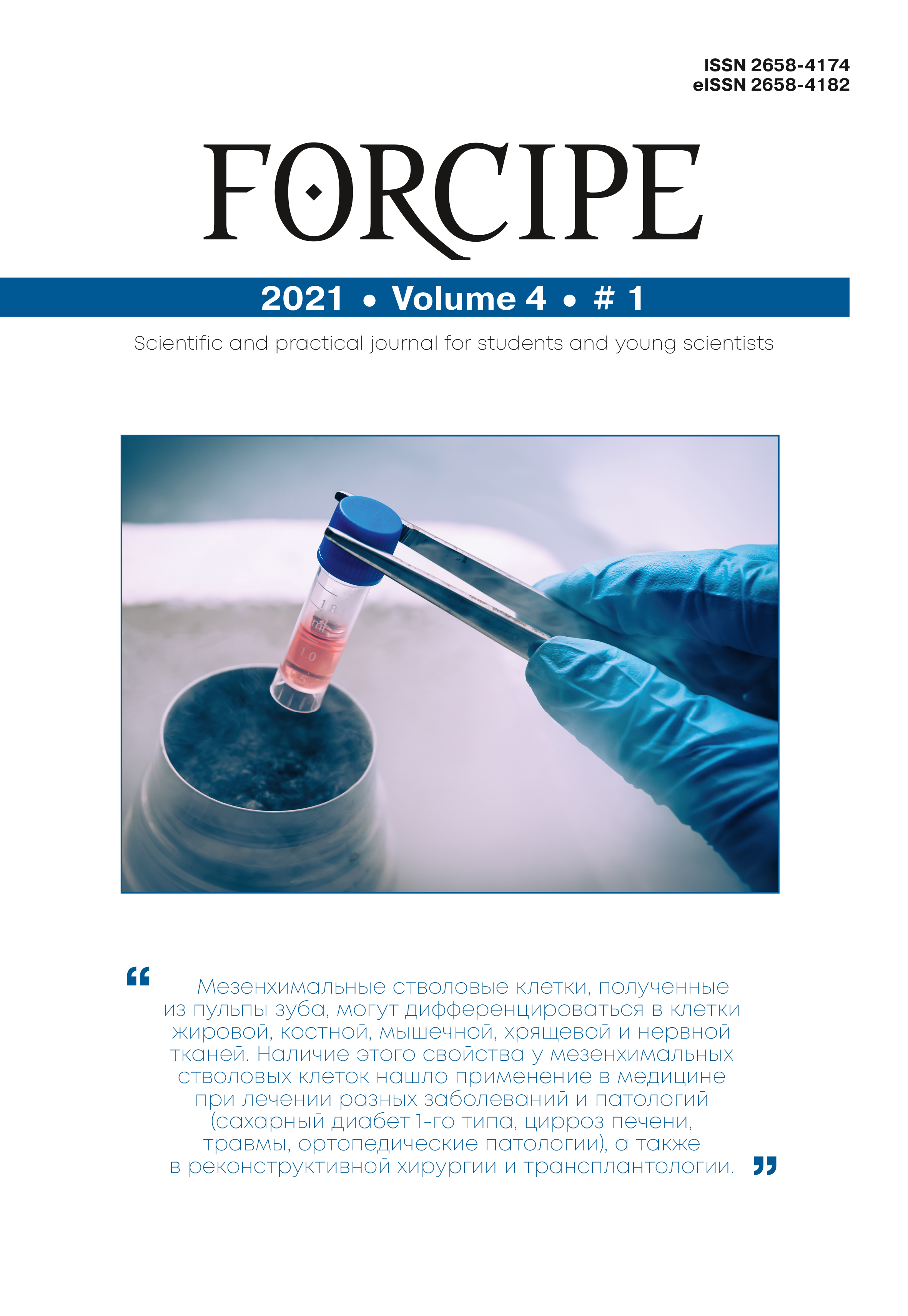STEM CELLS FROM TOOTH PULP: IMMUNOPHENOTYPIC CHARACTERISTICS AND DIFFERENTIATION
Abstract
Mesenchymal stem cells have a wide range of applications in medicine; traditionally, bone marrow is their source. This article discusses the properties of stem cells derived from tooth pulp, evaluates their immunophenotypic correspondence to cells from bone marrow. The methods are a cytometer study of the expression of surface antigens that confirm the phenotype of the studied cells according to the cultures of mesenchymal stem cells, the ability to chondrogenic and osteogenic differentiation in vitro is also evaluated, followed by staining to confirm its successful completion. As a result of an immunocytochemical study on the expression of surface marker proteins CD90, CD105, CD73, CD44, CD45, CD14, CD117, CD34, the phenotype of the studied cells was confirmed to correspond to mesenchymal stem cell cultures. Expression of CD34, CD45, characteristic of hematopoietic stem cells, was not observed in the studied cultures. The differentiation of the cells of one of the samples was started in growth media in a culture 6 well plate and cultured for 21 days. On day 22, differentiation was evaluated. To detect chondrogenic differentiation, cells were stained with Alcian blue, and for osteogenic differentiation, they were stained with Alizarin red, which stained the corresponding structures, which confirmed the successful differentiation. Thus, the stem cells contained in the pulp of the tooth correspond according to the morphology and immunophenotype of MSCs from the bone marrow and umbilical cord. That confirms the possibility of their use on a par with MSCs from other sources. MSCs from tooth pulp can be used in traumatology, maxillofacial surgery, dentistry, as well as in the treatment of burn wounds and various diseases (Parkinson’s disease, Alzheimer’s disease, diabetes mellitus, etc.). Stem cells can be isolated not only from the pulp of deciduous teeth, but also from the pulp of constants during tooth extraction according to the indications of the orthodontist.



